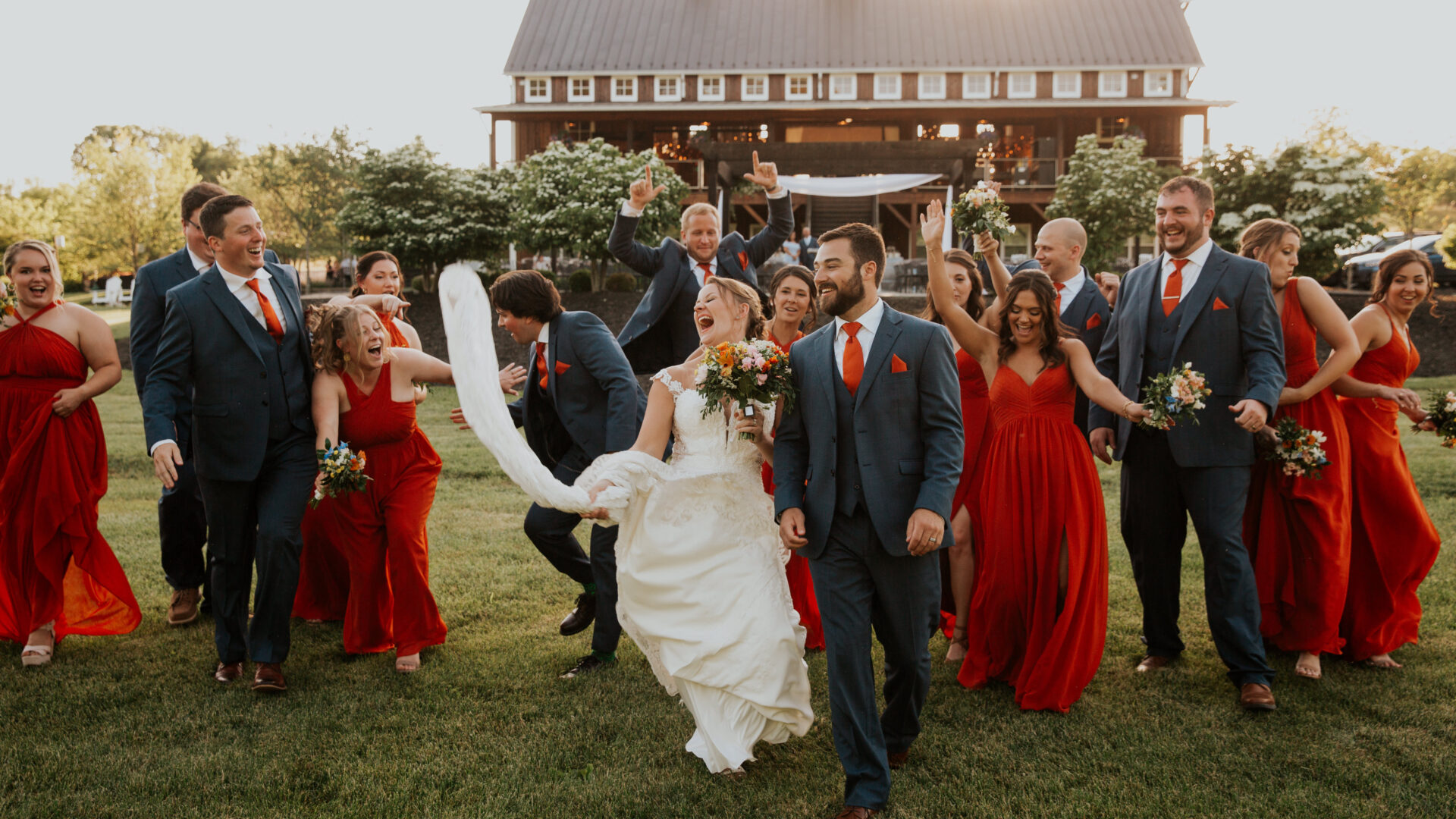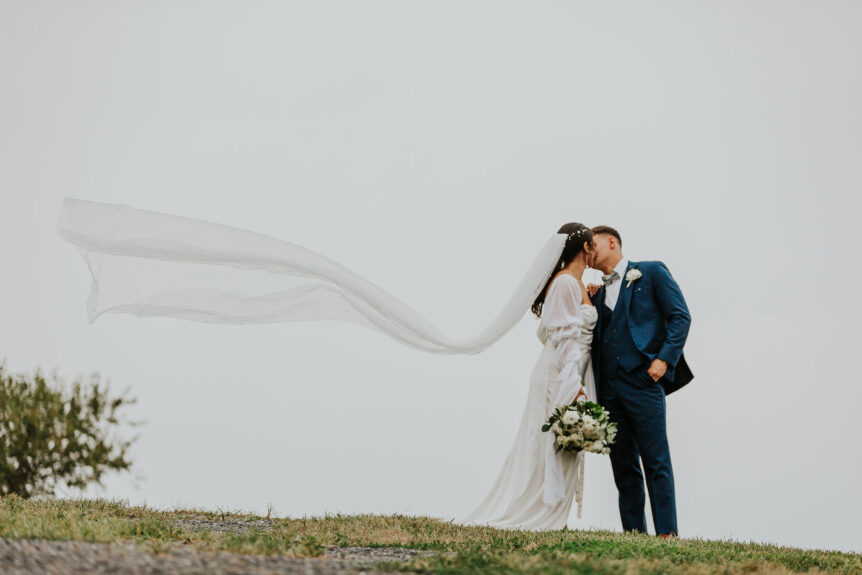By Melanie Walker
4-minute read
Are you ready to break the conventional wedding norms and add a touch of modern elegance to your celebration?
Wondering which customs to embrace and which to reinvent to create a celebration that feels authentically 'you'?
Explore our guide to modern wedding traditions, shaped by our experiences at Zion Springs, a barn wedding venue in Northern Virginia where we've hosted over 400 diverse ceremonies. We'll look at how wedding customs have evolved, tracing their origins to today's fresh and contemporary interpretations by couples. This guide is here to help you decide which traditions to keep, change, or completely rethink.
We'll walk through time-honored traditions and how they have transformed, providing you with ideas to modify them for your wedding. Whether opting for an unconventional ring or updating the bridal gown, our insights will steer your choices. By the article's end, you'll have a clear vision of how to blend tradition with modernity, creating a celebration that genuinely represents you and your partner.
The Significance of Wedding Traditions & Their Origins
Weddings are evolving. Nowadays, couples have more freedom to shape their special day, moving away from strict traditions to create personalized celebrations. This shift has sparked a blend of old and new, where cherished customs meet modern innovation. Time-honored wedding traditions, rich in symbolism and deeply rooted in history, have always connected us to our past.
We'll explore how these age-old practices are getting a modern makeover, showing how modern couples are ingeniously reinterpreting them to suit their current tastes and lifestyles.
Modern Interpretations of Classic Wedding Rituals
The Evolution of Engagement Rings in Contemporary Weddings
Engagement rings have been a symbol of commitment since Roman times, representing a formal marriage agreement. Today, they signify love, commitment, and the couple's future together, with various styles and stones reflecting personal tastes.
Why Do Brides Wear White? The Evolution of a Tradition
The tradition of brides wearing white dresses started in 1840 with Queen Victoria, who chose the color to highlight her dress's intricate lace and bolster the local lace-making industry. Before Victoria's choice, brides would wear their best dress, regardless of the color.
The Modern Take on Brides Being Given Away at Weddings
Originally, brides being given away by their fathers represented a transfer of guardianship. Modern interpretations have transformed this tradition to symbolize support and blessing from the family, with brides now choosing to walk down the aisle alone, with both parents or with another significant figure, reflecting a broader definition of partnership and independence.
The Significance of Ring Exchange in Weddings Today
Exchanging rings as a symbol of commitment dates back to ancient Egypt and Rome. Today, the ring exchange continues as a central wedding tradition, symbolizing a vow of eternal love. The circular nature of the ring reflects a never-ending bond between the couple.
Matching Bridesmaid Dresses: A Modern Approach to a Classic Tradition
Matching bridesmaid dresses can be traced back to Roman times, intended to ward off evil spirits by confusing them with similarly dressed attendants. Today, this tradition is more about visual harmony and unity, often adapted to allow variations in style to suit individual bridesmaids while maintaining a cohesive look.
Is the Tradition of Not Seeing the Bride Before the Wedding Still Relevant?
The custom of the groom not seeing the bride before the wedding is rooted in arranged marriages, intended to prevent the groom from backing out. In contemporary weddings, this tradition varies, with some couples opting for a 'first look' moment before the ceremony.
The Bridal Veil: Understanding Its Role in Today's Weddings
Historically, the bridal veil symbolized purity and protection against evil spirits. It also represented the bride's modesty and was key in transitioning from her family to her husband. Today, brides wear veils as a classic bridal accessory, with some embracing its traditional meanings and others choosing it for style.
The Symbolic Elegance of the Bridal Bouquet
Using herbs and spices, the bridal bouquet originally protected the bride from evil spirits and ensured good fortune. In the Victorian era, it became a way to express emotions through the language of flowers. It's a key part of the bride's attire, chosen for its beauty and how well it complements the wedding theme.
What's Behind the Confetti Toss at Weddings?
The confetti toss at weddings, originating from ancient customs of throwing grains or rice to wish fertility and prosperity upon the couple, has evolved. While rice remains a traditional choice, many prefer flower petals or confetti.
Modern Twists on Reception Traditions: Speeches, Tosses, Cakes, and Gifts
The Role of the Best Man's Speech in Today's Weddings
The best man's speech is a longstanding tradition, offering a blend of humor, sentiment, and well-wishing. While traditionally, the best man was the principal speaker, modern weddings welcome speeches from various guests, emphasizing personal connections and shared experiences with the couple.
Updating the Garter Toss for Modern Weddings
The garter toss is an old wedding custom where having a piece of the bride's clothing was considered lucky. In this tradition, the groom throws the garter, and the single men try to catch it at the wedding. Originally linked to ideas of marriage and fertility, the garter toss is now viewed by some as old-fashioned.
What’s the Tradition Behind the Bridal Bouquet Toss?
The bridal bouquet toss dates from 14th-century England, where it was thought to be lucky to touch the bride or her things, so she would throw her bouquet to single women to share her luck and avoid being crowded. It's a fun part of weddings, often seen as a way to predict who will marry next. However, it's become more inclusive, allowing all guests to join in, making it a moment of joy and luck for everyone.
Slicing Into Tradition: The Story Behind Wedding Cakes
The wedding cake, a staple at celebrations, symbolizes prosperity and unity, a tradition starting in ancient Rome with bread broken over the bride's head for luck. It evolved into the tiered cake we know today, symbolizing the couple's sweet and prosperous future. Cutting the cake together is a key moment, representing the couple's first shared act and commitment to their new life.
Wedding Gifts: Balancing Tradition with Contemporary Preferences
The custom of giving gifts dates back to the dowry system. It has evolved into a way to help the couple establish their new home. Modern weddings often feature gift registries or requests for monetary gifts, reflecting the couple's needs and preferences in their new life together.
Your wedding is not just a series of customs to be ticked off a list; it's a personal narrative that unfolds in every choice you make. Embrace this opportunity to blend the time-honored with the contemporary, creating a celebration that embodies your journey together. Moving forward in your wedding planning journey, carry with you the understanding that while traditions provide a foundation, your personal touch will make your special day truly unforgettable.
Frequently Asked Questions: Modern Wedding Insights
Wrapping Up: Your Journey Through Modern Wedding Traditions
As you start wedding planning, you're probably excited to learn about all the different traditions. It's an enjoyable aspect of preparing for your celebration.
This guide has shown you how to refresh traditional wedding elements with your style, proving that you can honor the past while making your celebration fit your story and future ambitions.
With this insight, you're set to progress in your wedding planning journey. Pinpoint the traditions that resonate with you and creatively integrate them into your celebration. Explore our resources for further inspiration, or seek personalized guidance from our wedding planning specialists. Your wedding transcends a mere occasion—it's a narrative of your love and commitment, ready to be articulated. Let's begin crafting your forthcoming chapter.

7 Wedding Reception Regrets You’ll Want to Avoid—And How to Do It Right

Jennifer and Alex’s Spring Wedding

6 Things Wedding Guests Don’t Care About



